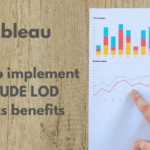Google DialogFlow Part – 1
Introduction
- Dialogflow is used to create a tool that helps in interacting with your website, mobile app, or your product.
- It is a natural language understanding platform.
- It helps in creating a better user interaction tool so that the best interactive experiences can be provided.
- By providing input and output messages automatic responses can be generated using AI capabilities.
- Machine Learning algorithm helps in providing better response on basis of previous interactions.
- Dialogue in DialogFlow means the questions or statements that the user asks while interacting.
Dialog Matching
- We need to provide some sample questions and answers so that we can train our model for the same.
- Say for example we need to have a chatbot for our ShoeShop, so the sample questions will be like-
- Is this(any size) available?
- Is this color available for this size?
- What is the delivery date?
- How to proceed with the return?
- When will this product come?
- Now, whenever these questions are asked by the user we have a text or audio base reply for this.
- And from the previous questions, we can train our model for similar questions like this.
Identifying User’s Expectations (Entities Extraction)
- Like in a database management system we have entities, similarly, we have the same in DialogFlow.
- Entities can be of different types like system entities, developer entities.
- In System Entities, we can have dates, times, emails.
- In Developer Entities, we can have new shoes, replacements, exchanges.
- We can also have synonyms of them so that a proper mapping can be done.
- Each word is made to fall into an entity so that classification can be done properly and better results can be achieved.
Control the dialog
- There are two types of dialog Linear dialog and non-linear dialog.
- The linear dialog includes one-liners questions and answers.
- That is questions having direct answers to them.
- Examples of linear dialogs are-
- Can this be delivered to this place?
- Is this size available?
- Is this color available?
- While non-linear dialogs are the complex ones in which multiple answers are possible.
- Examples of non-linear dialogs are-
- Can it be delivered tomorrow?
- Two answers are possible for this – yes it is, no what about the day after tomorrow?
- Now in the second case, there will be a series of questions.
- This falls in the example of non-linear dialogs.
Conclusion
This is the first part of DialogFlow, in the next part we will cover the use cases, key features, and implementations.
References
- https://cloud.google.com/dialogflow
- https://www.youtube.com/watch?v=-tOamKtmxdY&list=PListM28kf0CNiMdmz-Ta5UcLR-ePCOW__&index=3
Still Curious? Visit my website to know more!
For more interesting Blogs Visit- Utkarsh Shukla Author
0 Comments
Add Comment
You must be logged in to post a comment.







